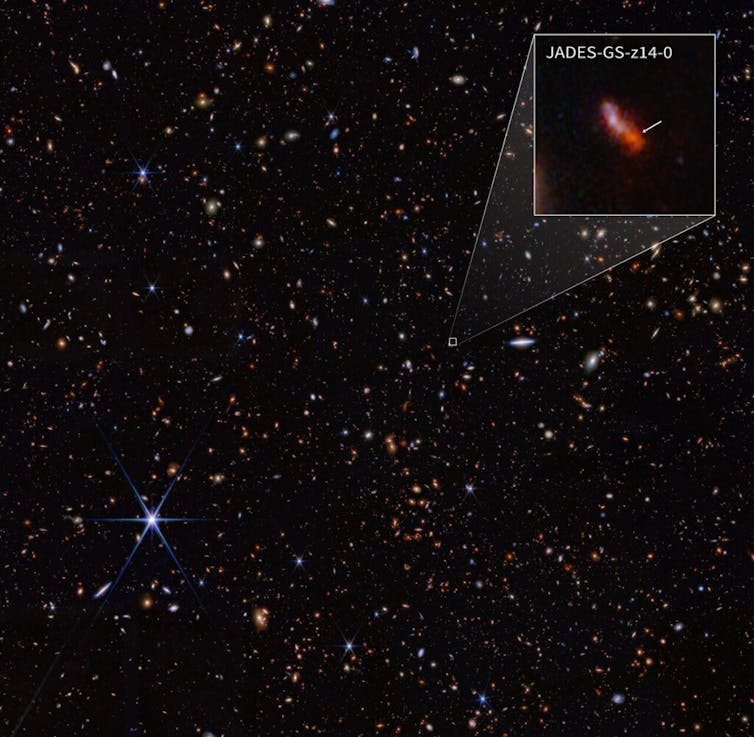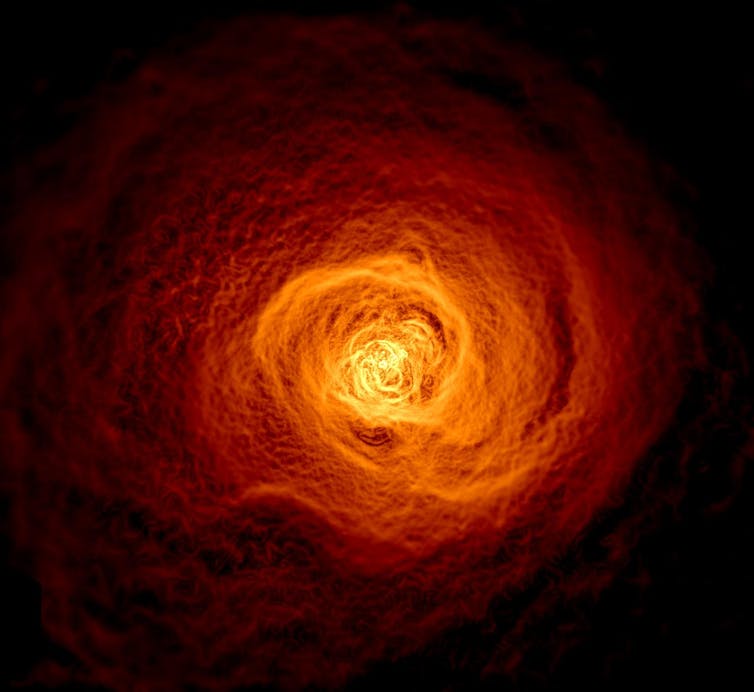Do constants of nature — the numbers that determine how things behave, like the speed of light — change over time as the universe expands? Does light get a little tired travelling vast cosmic distances? It was believed that dark matter and dark energy explained these cosmological phenomena, but recent research indicates that our universe has been expanding without dark matter or dark energy.
Doing away with dark matter and dark energy resolves the “impossible early galaxy problem,” that arises when trying to account for galaxies that do not adhere to expectations regarding to size and age. Finding an alternative to dark matter and energy that complies with existing cosmological observations, including galaxy distribution, is possible.
Dark matter
Dark matter is a hypothetical form of matter that does not interact with ordinary matter in any way except through gravity. It was proposed as a theoretical way to explain our astrophysical and cosmological observations. Ordinary matter can travel through the dark matter without any resistance and vice versa.
In space, gravitational pull determines the speed at which an object orbits. A higher speed than expected from surrounding orbiting objects is attributed to the existence and gravitational pull of dark matter.
The gravitational pull of dark matter can also bend light rays, causing a gravitational lensing effect just like normal matter. This allows for the measurement of dark matter in the object causing the bending, such as in galaxies and clusters of galaxies.
The most robust support for the existence of dark matter comes from the tiny variations observed in the cosmic microwave background radiation (remnant radiation from the big bang), measured with increasingly high precision.
Another argument for the existence of dark matter is that large-scale structures of the universe, such as galaxies, would not be able to form without the dark matter within the limited age of the universe.
(NASA’s Goddard Space Flight Center/Stephen Walker)
Alternative theories
There are alternatives to dark matter that account for many astrophysical observations. The oldest and most popular theory is modified Newtonian dynamic (MoND), which suggests that the Newtonian inverse square law of gravitational attraction force is a simplified version of a complete force that becomes perceptible only at very large distances when Newtonian force becomes negligible.
Another alternative is a version of MoND that includes Einstein’s relativistic effects and explains observations where MoND is limited, such as cosmic microwave background radiation. Then there is the proposed theory of retarded gravity that also claims to comply with such observations.
Astronomers are surprised to learn that many observations show a complete absence of dark matter or dark matter-deficient structures. This leads one to question its existence.
One then has to find an explanation of what might have created the problem, such as tidal forces exerted by the passing of nearby galaxies stripping away dark matter. Even the mass of the Milky Way has recently been determined to be much smaller than expected from cosmology.
Does dark matter exist?
Recent discoveries create doubt around the existence of dark matter. Despite extensive research and billions of dollars in investment, there has been no direct detection of any dark matter.
The dark energy theory negates the gravitational pull of matter, causing the universe to expand faster with time, as observed. The interrelated variation of constants of nature, dubbed covarying coupling constants (CCC), achieve the same effect by weakening the gravitational pull and other forces of nature with time, eliminating the need for dark energy.
Combined with the tired light (TL) effect which posits that light slows down as a result of energy loss, such a cosmological model has no room for dark matter. The CCC approach could also replace the dark energy-like constant considered responsible for the extremely rapid expansion of the universe following the Big Bang, called inflation.
The age of the universe is determined from the historical expansion rate of the universe, and can vary depending on the model used for the expansion. Measuring the redshift of exploding stars, called supernovae type 1a, and their observed brightness can determine the expansion rate.
Redshift is the lowering of spectral line frequencies depending on the recessional speed of the emitting object, similar to the frequency of a receding ambulance siren. By allowing the redshift due to the tired light effect to coexist with the expansion redshift, the universe’s expansion rate is reduced, and age of the universe increases.

(NASA, ESA, CSA, STScI, B. Robertson (UC Santa Cruz), B. Johnson (CfA), S. Tacchella (Cambridge), P. Cargile (CfA))
This new model predicts the universe is older than we think it is — 26.7 billion years in the CCC cosmology compared to 13.8 in the standard cosmology — and allows galaxies and their clusters to form without dark matter. The increase in the age of the universe in early times when structures started forming was up to 100 times larger in the new model.
The absence of dark matter that reduces the gravitational force and increases the time for collapsing the matter to form structures is greatly overcompensated by increased age in the CCC model.
Slowing time
The expansion of the universe causes time to appear slowed down when observing distant galaxies. The CCC+TL model complies with observations showing a time dilation effect that appears to slow down the clock in distant objects.
Emerging criticisms of the CCC+TL model rely on flawed hypotheses, such as the deficiencies presented by the tired light concept, or incorrect analyses, including redshift analysis of cosmic microwave background temperatures. A single free parameter in the CCC cosmology determines the variation of all constants that asymptotically approach their respective constant values. As in the standard cosmology, CCC cosmology has only two free parameters. Adding tired light to CCC does not require any additional free parameter.
The standard cosmology model requires dark matter to fit observations, such as accounting for redshift when measuring the brightness of supernovae. Dark matter is also used to explain physical processes such as galaxy rotation curves, galaxy clusters or gravitational lensing. Using CCC+TL cosmology means that we must seriously consider alternative physical processes to account for astrophysical observations that had previously been attributed to dark matter.




